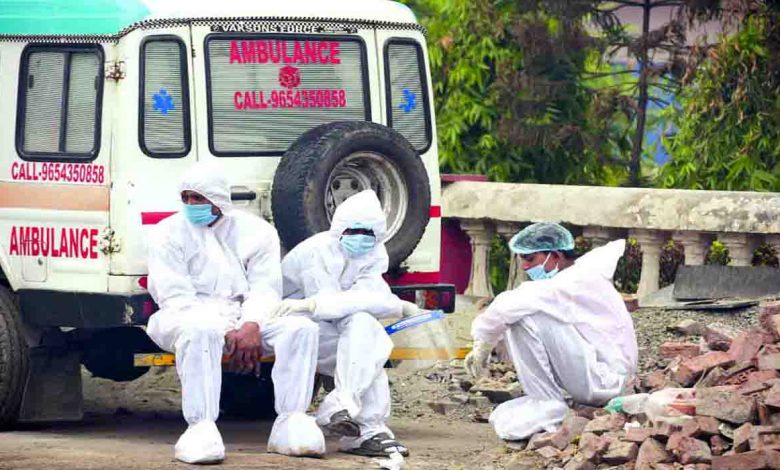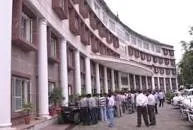Lag effect, rural invasion behind Covid death spike

Wednesday, 19 May 2021 | Archana Jyoti | New Delhi
Daily death count reaches all-time high; Covid management in villages a concern, say health experts
Health experts have pointed out that though Covid-19 cases are on the declining trend, mortality due to lethal virus amid second wave is likely to be on the higher side, at least in the near future. The assessment is based on the fact that on an average there is a two-week lag in deaths from the infection time.
On Tuesday, the daily Covid death count reached all-time high of 4,387.
The penetration of coronavirus in rural India is also linked to greater causality due to non-existent health infrastructure.
The fallout of the peak that the country witnessed in the last two weeks will be reflected in the number of deaths. Currently, record deaths are occurring each passing day with over 4,300 on Tuesday.
To make the matter worse, Tamil Nadu, Tripura, Sikkim, Arunachal Pradesh, Manipur, Mizoram are showing the rise in cases and the positivity. So are the rural areas which are besieged with their own set of problems like delayed testing and inadequate treatment besides poor medical facilities and hesitancy to recognise the disease, said the experts.
Dr Jugal Kishore, the head of community medicine at Safdarjung Hospital, said, “It’s only in the past seven days that the cases have started declining from over 4 lakh to 3 lakh.” However, one has to keep a watch on those infected as the virus has an incubation period of 4 to 14 days.
If the infected patients do not get timely and adequate treatment, their situation may aggravate as the virus this time is more lethal.
For instance, Tamil Nadu is reporting 30,000 cases daily and positivity rate at 20 per cent.
“There is a need to keep tabs on people in home isolation as many are not turning to hospital, fearing that they will get infected or won’t able to pay hefty hospital bills,” Dr Kishore said..
The second wave is already ripping through small towns and villages as reflected in swelling cases and deaths, following the migration of labourers from the urban areas and devotees from religious events. Dr Kishore suggested that the Government should immediately start focusing on rural areas to prevent deaths.
There have been reports of a spike in infection and deaths from the hinterland of Uttarakhand, Uttar Pradesh and Madhya Pradesh, besides a few others.
Dr Rajani Surendar Bhat, senior pulmonologist from Apollo Specialty Hospitals, Bengaluru, stressed on intensifying awareness campaigns in the rural areas. “Having proper medical infrastructure is not enough, human resources are also required. The locals should have the confidence to get into hospital and have a bed with oxygen where they can feel a bit secure. The authorities should reach out to the community, dispelling their fears and ensure early detection and treatment.”
Doctors also said that numbers started to rise in late March after the Holi festival, when people dropped their guard. Mortality data in India is poor and deaths at home often go unregistered, especially in rural areas.
Dr Om Srivastava, consultant and visiting professor, infectious diseases, Mumbai, said that over a period of time, from November last, we probably became a little bit complacent, thinking the virus was out of our lives. In doing that, we probably did not keep the social distancing we should have.
“Delays are putting many patients in the villages at risk. RT-PCR tests are also taking days,” Dr RK Dhamija, public health expert from Lady Hardinge Medical College, said, adding that while the first wave of the pandemic in India, which peaked in September, was largely concentrated in urban areas, where testing was introduced faster, the second wave that erupted in February is raging through hinterland, home to about two-thirds of the country’s 1.35 billion population.





